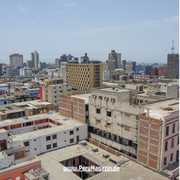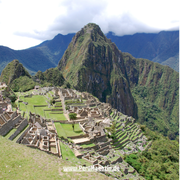
Peru , a diverse and fascinating country in South America, is known not only for its stunning scenery and rich culture, but also for its complex political landscape. This analysis provides a comprehensive overview of the political situation in Peru , starting with the historical development and ending with current political events and future prospects.
1. Historical background of Peruvian politics
Peru has a turbulent political history marked by political instability, military rule, and the pursuit of democracy. After gaining independence from Spain in 1821, Peru experienced a period of political uncertainty and conflict. Establishing a stable government was difficult as rival political factions fought for power.
A significant period in Peru 's political history was the era of militarism in the 20th century. Military coups and authoritarian governments characterized this period, with some of the most prominent figures being General Juan Velasco Alvarado and Alberto Fujimori. Fujimori's government, which lasted from 1990 to 2000, was characterized by economic reforms, but also by authoritarian tendencies and corruption scandals.
2. Political institutions and structures
Peru is a presidential republic with a multi-party system. The executive branch is headed by the president, who is both head of state and head of government. The president is directly elected by the people every five years and can serve a maximum of two non-consecutive terms.
The Peruvian Parliament consists of a unicameral parliament, the Congress of the Republic of Peru . The 130 members of Congress are also elected every five years. The Legislature is responsible for legislation and controlling the executive.
In addition, at the regional level, there are regional governments and municipal councils that are responsible for the administration of the various regions and municipalities of Peru .
3. Political parties and ideologies
Peru 's political landscape is extremely diverse and includes a wide range of political parties with different ideologies and orientations. Some of the most prominent parties are:
- American Popular Revolutionary Alliance (APRA): A social democratic party that plays an important role in Peru's political history.
- Peruvian Nationalist Party (PNP): A populist party that promotes a nationalist and socialist agenda.
- Popular Force (Fuerza Popular): A conservative party led by former presidential candidate Keiko Fujimori.
- Broad Front (Frente Amplio): An alliance of left-wing parties and social movements that advocates social justice and environmental protection.
However, Peru 's political landscape is also characterized by independents and smaller parties that represent a variety of ideas and viewpoints.
4. Challenges and problems in Peruvian politics**
Despite democratic progress and political stability over the past decades, Peru continues to face numerous challenges and problems, including:
- Corruption: Corruption remains a serious problem in Peru and has undermined public confidence in political institutions.
- Social inequality: Peru has a high rate of social inequality, with many people living in poverty and limited access to education, health care and other basic needs.
- Environmental degradation: The exploitation of natural resources has caused severe environmental damage, including deforestation, water pollution and loss of biodiversity.
5. Future prospects for Peruvian politics**
The future of Peruvian politics is marked by uncertainty, especially given the recent political turmoil and ongoing challenges. It remains to be seen whether political leaders will be able to address the country's pressing issues and pave a path to sustainable growth, development and social justice.
Overall, Peru 's political landscape is a fascinating and complex area that continues to require intense political debate and engagement to strengthen democratic institutions and improve the quality of life for all Peruvians.



